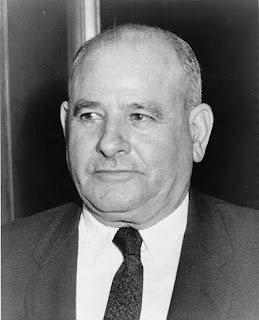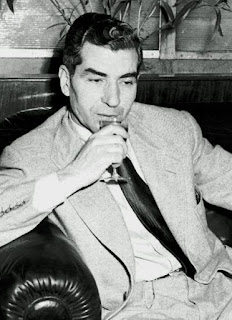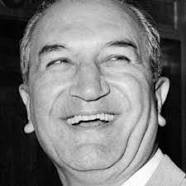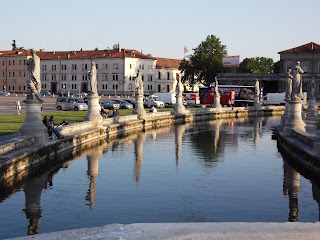Suspicious death of leader who conquered Britain
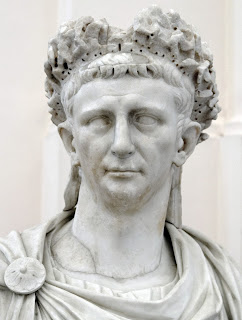 |
| Claudius - as depicted in a marble bust at the National Archaeological Museum in Naples |
The Roman emperor Claudius, whose reign was notable among
other things for turning Britain into a province of the Empire, died on this
day in 54 AD.
It is a widely held view that he was murdered, by poisoning,
on the orders of his scheming fourth wife, Julia Agrippina, the mother of his
successor, Nero, in one of the power struggles that at the time were ever
present.
It is thought he ingested some poisonous mushrooms that his
taster, the eunuch Halotus, had assured him were safe to eat, either at an official
banquet on the evening of October 12 or at his first meal of the following day.
When Claudius began to show signs of distress, one version
of the story is that his physician, Xenophon, pushed a feather into his throat,
ostensibly to make him vomit, but actually to ensure that he did not recover by
administering more poison, with which he had coated the feather.
There have been arguments that the poisoning story was
nonsense and that, at 63, Claudius died from natural causes related to ageing.
Yet Agrippina - sometimes referred to as Agrippina the Younger - seemed to have had a clear motive.
Beautiful and ambitious, she had seduced Claudius into
marriage even though their coupling was against the law – he was her uncle –
and even though after surviving one plot against him by his third wife, Valeria
Messalina, Claudius had vowed never to marry again.
He had the Senate pass a special decree to authorise his
union with Agrippina and was sufficiently besotted with her to trust there
would be no repeat of Messalina’s attempt, with her lover, Gaius Silius, to
instigate a coup.
 |
| Agrippina the Younger, mother of Nero, who is thought to have ordered Claudius's murder |
Claudius duly adopted Nero as his own and promised him the
hand of his daughter, Octavia, in marriage.
As Britannicus grew up, though, there were suggestions that he might be
reinstated as the emperor’s heir, which is thought to have been the reason
Agrippina decided to take action.
She was determined that Nero would be proclaimed emperor
while he was still young, with her acting as guardian, so that she could
influence the way he ran the empire. The move backfired spectacularly when, as
soon as he was old enough to govern in his own right, he had her murdered.
Claudius had been an unlikely emperor. As a child and adolescent, he suffered from a
number of physical ailments including tremors, a stammer, a limp, and foaming
at the mouth. Historians have speculated that he may have had Tourette’s
syndrome.
Even his own family mocked his afflictions. His mother
described him as a “monstrosity” and Caligula - his nephew and predecessor as
emperor – was relentlessly cruel to him.
Over time his handicaps eased and he had ambitions of a
political career. But he was passed over time and again for public office and
eventually took to filling his days with drinking, womanising and gambling, although
he was intellectual enough in sober moments to spend long hours immersed in
books, expanding his knowledge.
Later in life, he would produce many volumes of history, on
Carthage, the Etruscans and the Roman Republic.
 |
| Lawrence Alma-Tadema's 1867 painting shows Claudius pleading for his life with the Praetorian Guard |
In the event, Caligula was murdered by his own supposed
protectors, the Praetorian Guard, in a sudden but seemingly long-planned coup
in 41 AD. Claudius is said to have
cowered behind a curtain while the bloody deed was taking place and expected
himself to be slain.
Instead, when he was discovered by soldiers, he was saluted
as the new emperor and taken to a place of safety to prepare for office.
It took a substantial pay rise to ensure the support of the
Praetorian Guard going forward but once installed Claudius proved a clever and
effective leader.
Domestically, he improved the judicial system, encouraged
urbanisation, revived several old religious festivals, organised a spectacular
Secular Games and ordered the construction of a new port at Ostia.
But by far his most eyecatching achievements were in foreign
policy, where he annexed several territories in Africa and Asia and succeeded
where others before him had failed in launching and completing the conquest of
Britain.
Assembling a force of 40,000 soldiers and accompanying war
elephants, he targeted the tribal stronghold at what is now Colchester and
captured their leader, Caratacus.
He made a personal visit to Britain during the invasion and
remained for 16 days before returning to a hero’s welcome in Rome.
 |
| The ruins of the Forum in Rome |
Travel tip:
For a fine view across the ruins of ancient Rome towards the
Colosseum in the distance, head for Michelangelo’s Piazza del Campidoglio, next
to the Palazzo Nuovo and Capitoline musuems, where there is a balcony that
looks out across the ancient city.
Travel tip:
From the time of Augustus, who ruled from 27 BC to 14 AD,
Roman emperors traditionally lived in an imperial palace atop the Palatine
Hill, the central hill among the seven hills of ancient Rome. The remains visible today are of at least
three palaces, built next to one another
over the years, in which Augustus, Tiberius and Domitian lived. The word ‘palace’ – palazzo in Italian –
derives from the name of the hill.










